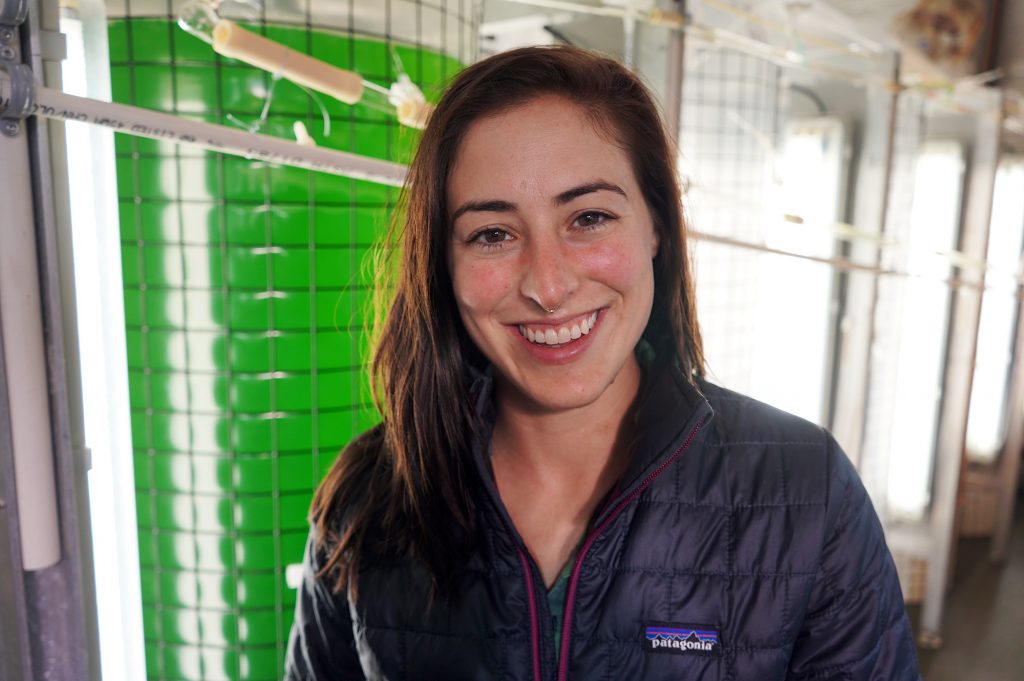By Taylor Reidlinger, Restorative Ocean Farming Project Coordinator
Theory put into practice in northern B.C.
Do you feel like the world is changing ever more rapidly? I do. To thrive as humans, we need to address both the effects of climate change and the needs of growing populations. This demands that communities act as stewards of the environment while adapting to its changes.
An exciting initiative that aims to support both community food needs and environmental well-being is restorative ocean farming, an aquaculture practice where seaweeds and shellfish are grown together in vertical ocean plots. Since January, I have been exploring restorative ocean farming — tangibly — in Metlakatla territory.

Is it feasible?
Working in Prince Rupert with support and guidance from Ecotrust Canada’s North Coast Innovation Lab (NCIL), Coastal Shellfish Corporation, Metlakatla Stewardship Society, and Metlakatla Aquatic Resources, I have been scoping the realm of feasibility to understand what governance structures, business models, and project plans could lead to local positive outcomes through restorative ocean farming.
The main goal is to provide access to wholesome local seafood while reducing the energy inputs, space requirements, and environmental impacts of food production. I also hope that we can lay a foundation for this program that encourages community connection to the environment and to one another, which can help further diversify the local job market and marine economy. By building on Coastal Shellfish’s success in shellfish aquaculture, we are working to design a program that respects Coast Tsimshian heritage and territory and supports the community into the future.
The benefits
Shellfish aquaculture produces delicious protein that is healthy for humans and the environment. Kelp aquaculture regulates oceanographic imbalances and provides habitat for other species while it grows into nutritious food, and a product with a variety of other uses. When grown in combination, these species create a restorative ocean farm that becomes a nutritious, delicious, and sustainable combination.

Seeding the ocean
Now that the realm of what is possible has started to develop, I will be working toward setting up test plots, engaging further with community members and knowledge holders, and continuing to find ways to mitigate any potential roadblocks to success. By the end of summer, we hope to start our Coastal Shellfish pilot program – seeding the ocean with species that will grow to demonstrate what local seafood could be produced in a larger long-term, financially self-sustaining program.
The Mitacs–NCIL opportunity has enabled this partnership and the exploration of an idea that has, until now, rested only in the hopeful minds of community members.
From theory to practice
Working as a project manager on an initiative in its early stages has been an amazing professional learning experience for me. While working on the project, I’ve also completed coursework toward my Master of Science degree in Environment and Management. I’ve been able to apply the theory of sustainable community development coursework directly into this real-world scenario.
This type of coursework has synced beautifully with the Ecotrust Canada social innovation lab model – where theory is applied to practice – and learning from the resulting effects helps us to progress closer toward intended outcomes where community members act as stewards in a changing world.
—————————————————————————————————————–
The North Coast Innovation Lab internships are made possible through support from Mitacs Canada.
[This blog was published on Jun 28, 2019]

